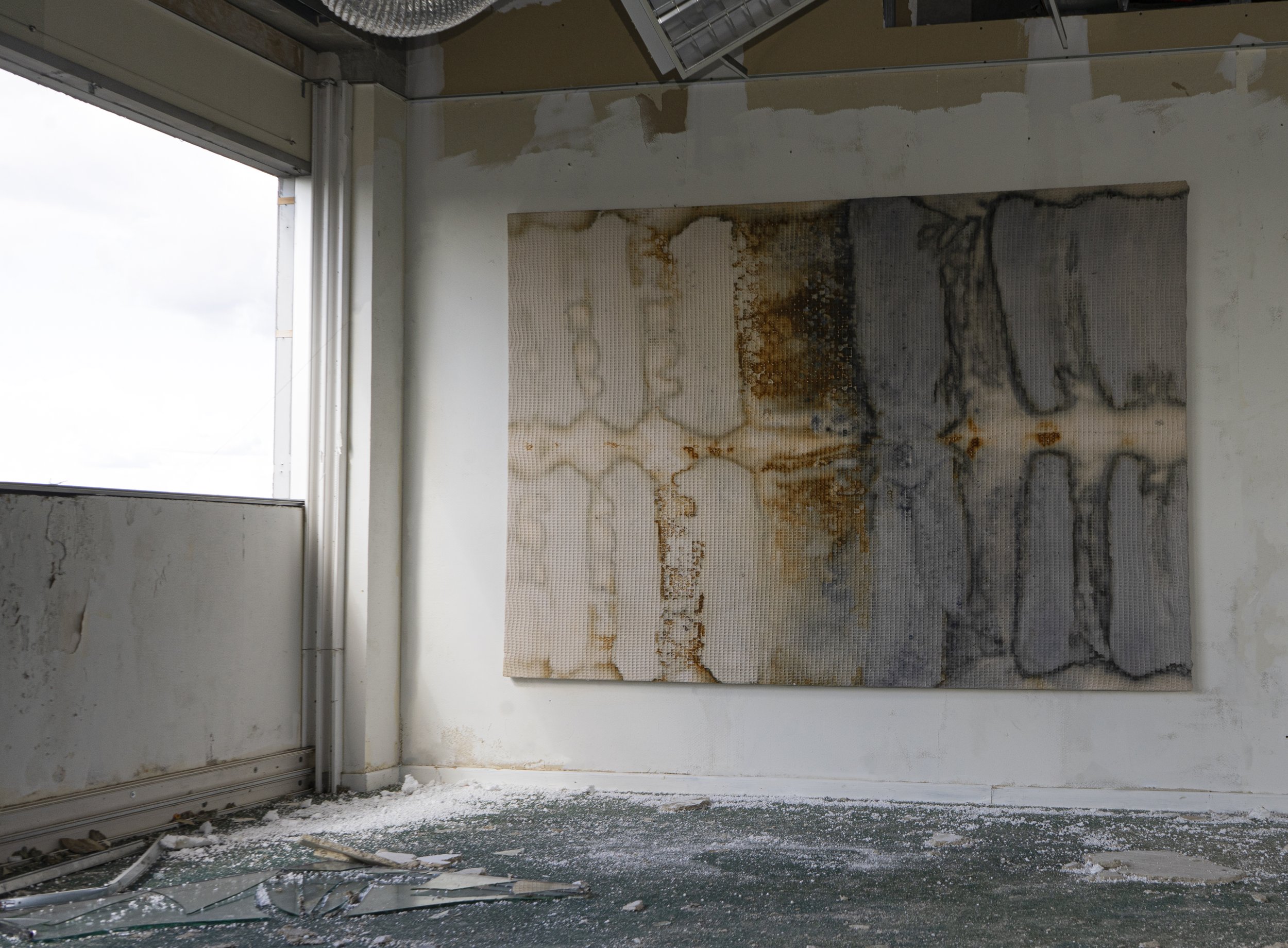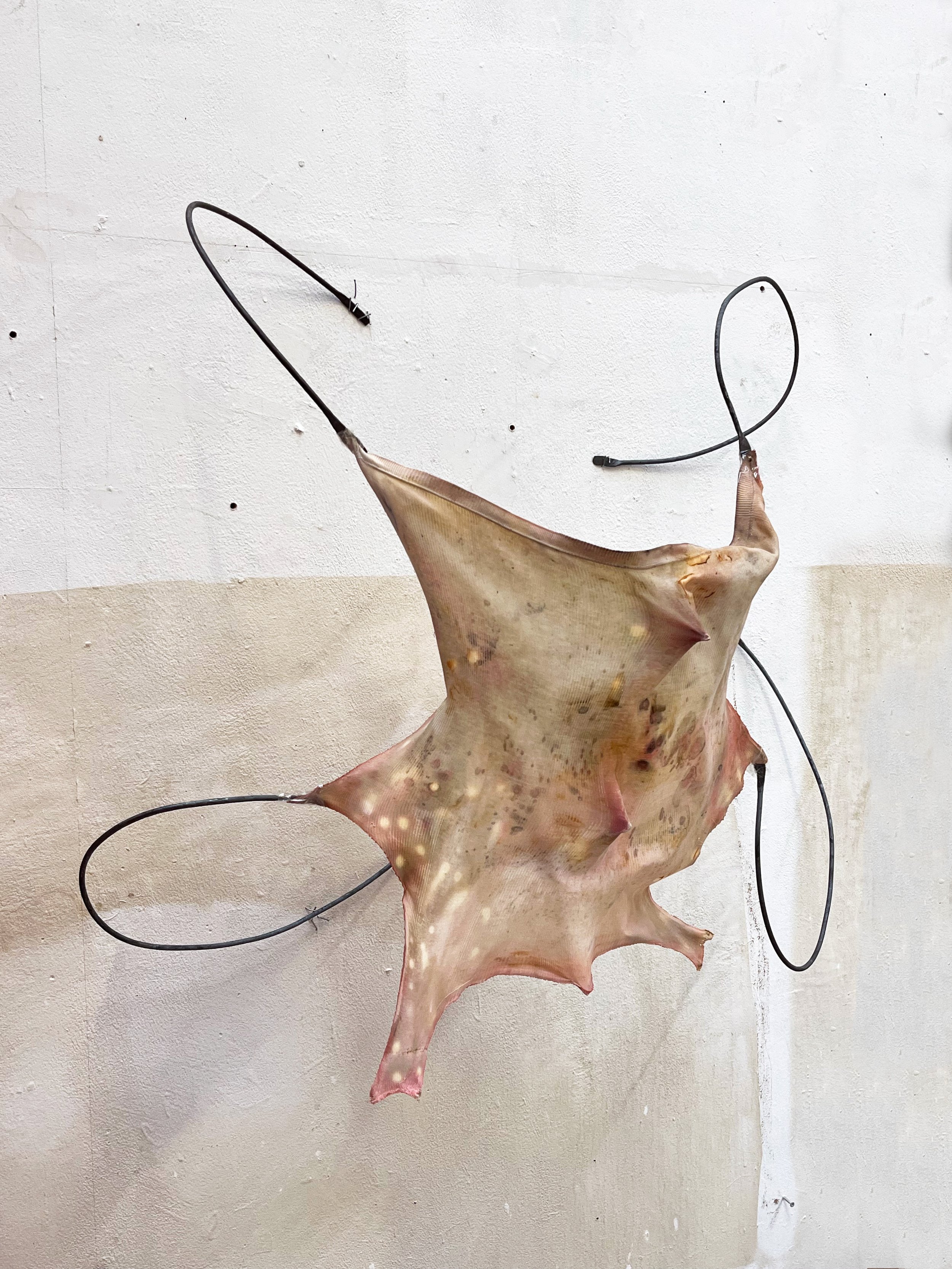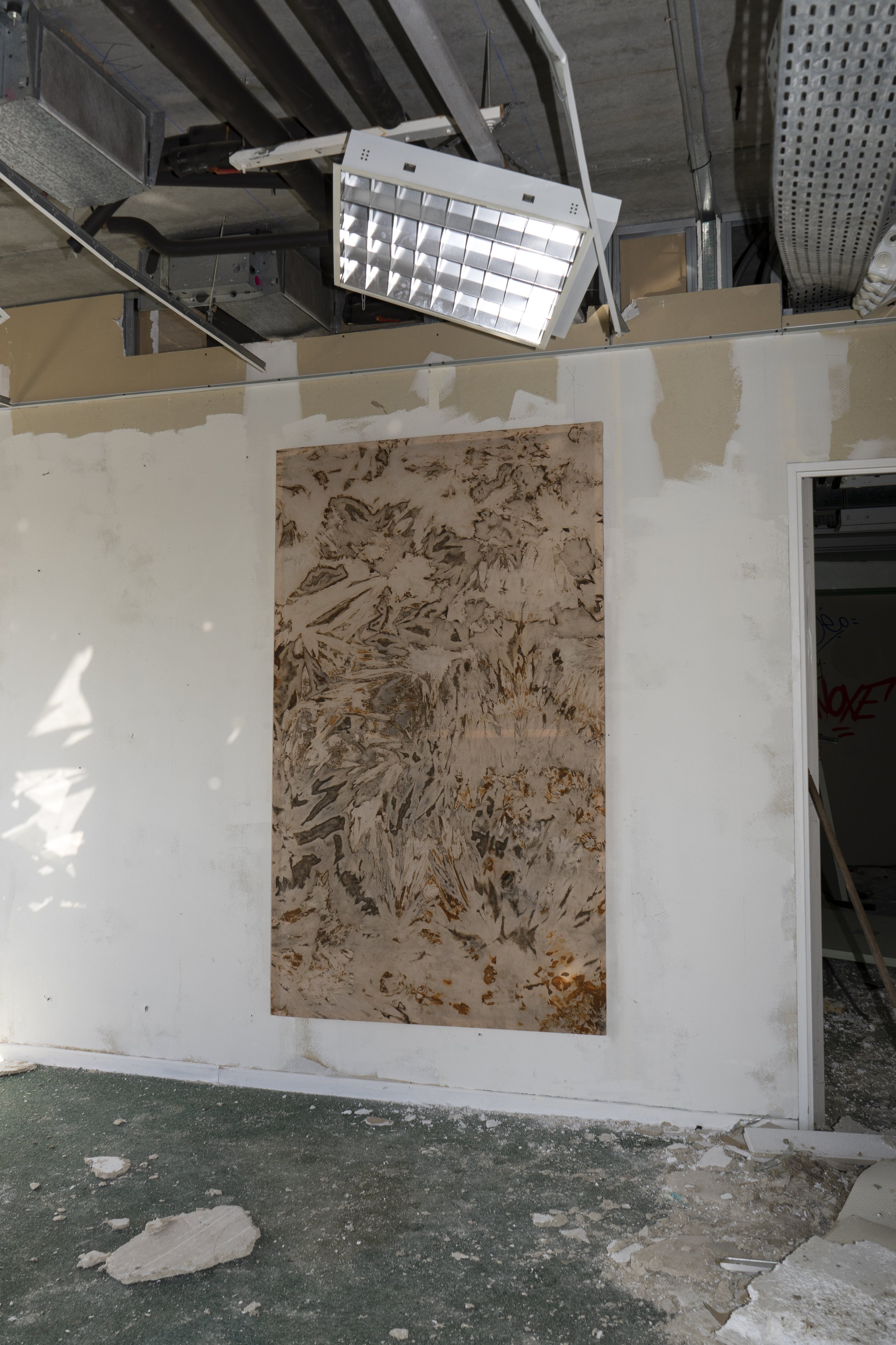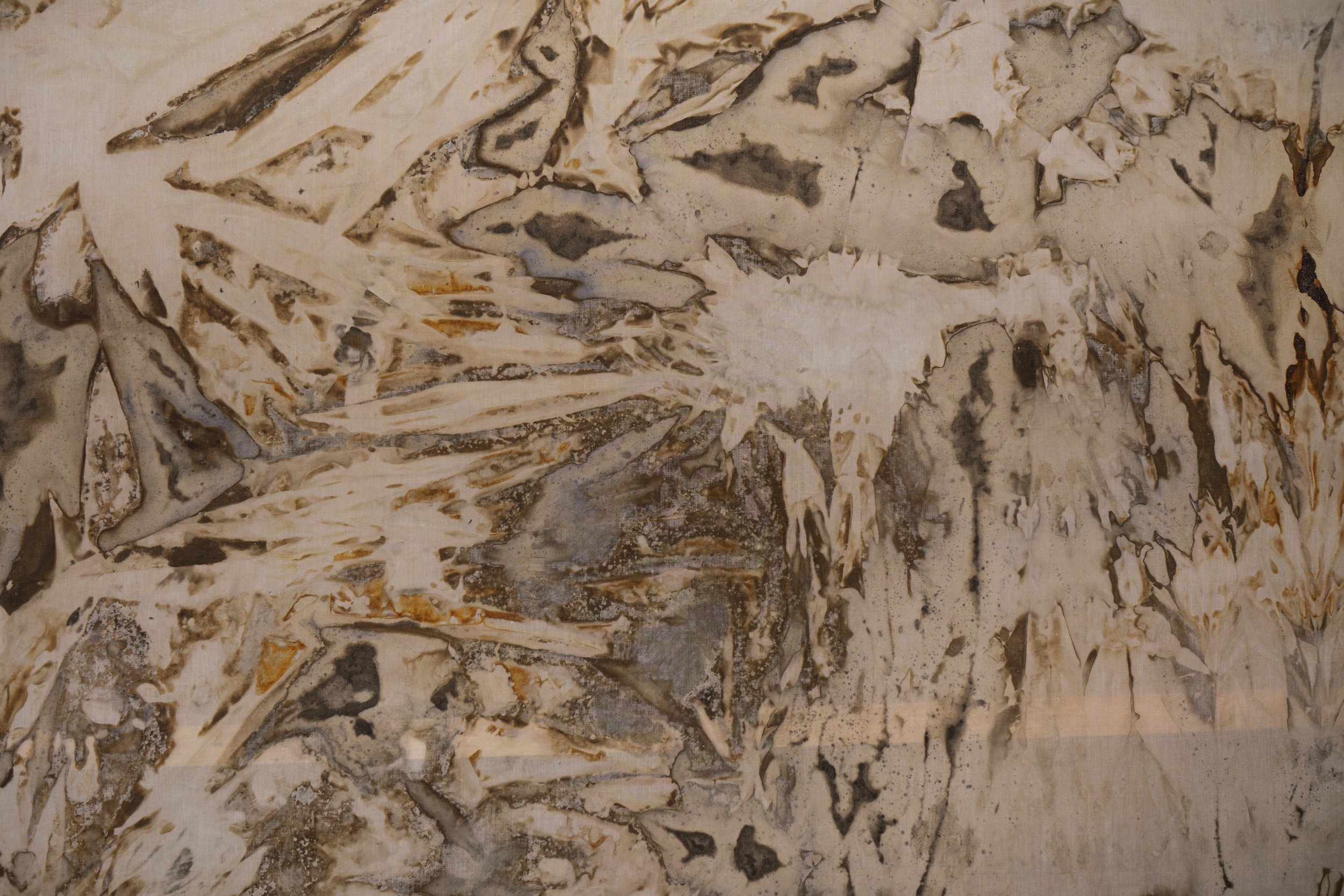











THE INTERVIEW
Chavant Maëlys
1. Could you share a bit about your background and what led you to start your art practice?
I was born in the south of France, in Toulouse, in the countryside. I spent a lot of time playing outside, in the forest, when I was a child. It is there that I imagine I honed my sense of observation and my imagination. I studied applied arts, particularly fashion and fashion imaging at the École Duperré in Paris. For me, fashion was a form of “total art”: sculpture around a moving body, set design, music, light—a large, living composition that unfolds a complete universe. However, the professional world was too far from my expectations, so I started assisting visual artists. I still do this today, and it’s always very enriching, both in terms of reflections and techniques. It immersed me in the world of art and rekindled my desire to create total spaces. I needed a place to create and meet others who shared this desire, so I applied to the Beaux-Arts de Paris.
2. What themes does your work explore?
I think my work explores many things, but there are always recurring elements. I work a lot around the living—the human and the non-human. The mutations and evolution of living beings in contact with humans, the forms this produces, and the poetry that emerges from it. I believe there is always a political dimension in my forms: the study of behaviour, craftsmanship, and transmission. But I remain open to many other subjects, depending on the people I work with or the context of the project's production.
Q: How do you address capitalism in your work?
In my work, I address capitalism by exploring the rhythm it imposes, the way it extracts resources, and the impact it has on our society. The time imposed by capitalism and the spaces it creates are at the heart of my research. I study past and present periods to imagine prospective narratives. I rely heavily on ruins, abandoned places, and areas that have been rendered inaccessible to humans. For example, right now, I’m working on areas made inaccessible by roads and highways: the “Tiers-Paysage,” according to Gilles Clément. I access these spaces by hitchhiking; it’s the only way. By using hitchhiking to reach these places, I access the margin, the edge of the system, where it no longer holds power. This produces a certain alienation, a form of awareness, and that is what I want to convey through the forms I create. I use the poetry of shapes and materials to place the viewer in these very particular spaces.
3. How has your work evolved over the years, and what has influenced those changes?
I think the last two questions answer this one, but more recently I would say that my entry into the Beaux-Arts de Paris has influenced the way I approach my projects. It has made me freer in my artistic choices, which had been shaped—or at least constructed—through my studies in design. I also have access to many technical workshops, which allows me to really test out a lot of things like forging, ceramics, molding, and continue my photographic and digital practice.
4. Where do you find inspiration for your work?
I think inspiration is all around me; it comes from my experiences. For that, I try to stay curious about everything, to open myself to as many encounters as possible. I also put myself in situations I don’t always control, in order to discover new things, whatever they may be.
I also walk a lot—walking is for me a moment of reflection or emptiness, and both are important. Inspiration, or at least ideas, often come when I walk, when my body is on autopilot and everything else is in motion. I am also surrounded by very inspiring and curious people who nourish me greatly. Then, like many, I search the internet, I read, I listen to the radio…
5. Can you walk us through your creative process and how you bring an idea to life?
I would say that I love creating ensembles; I enjoy when the pieces resonate with each other. Imagining an atmosphere, like an ecosystem—each piece must communicate with the one next to it. This desire greatly influences the way I create. Once a subject interests me, I think about the different pieces that will make up the whole. To do this, I research materials, the techniques associated with them, and explore how I can repurpose their uses. I also gather a lot, whether in life or on the internet, and I draw or make models, which helps me compose.
Q: Has hitchhiking always been a theme you wanted to explore or is that something new since you’ve transitioned to art?
I would say that the road has always been a place of fascination for me. I created a clothing collection centred around the themes of the road and nomadism during my BTS at Duperré. Hitchhiking came later; it’s a practice that my friends introduced to me when I was between 18 and 20 years old. So, naturally, the idea of turning it into a project emerged, but the practice of hitchhiking existed before the project.
For me, hitchhiking is still an intense and rich experience. It’s a form of freedom: you can go wherever you want, it’s free, but it forces you to be in the present moment, attentive, and to make contact with the road and those who use it. There’s an exhilarating feeling, a sense of freedom where your experience also depends on others, thus recreating a sense of connection. But hitchhiking also confronts us with the reality of our society, which made me think of a concept by Paul B. Preciado, "pétro, sexo, racial." This concept reflects on how systems of power, capitalism, and social hierarchies interact with gender, sexuality, and race identities. It analyzes how these categories influence the way individuals experience their bodies and their lives in a globalized world, and how they determine the possibilities for freedom and movement. The road and the practice of hitchhiking perfectly illustrate this idea for me.
6. What is the project you’re most proud of to date?
I think it's the projects that I haven't finished yet—the ones that are in my head, the ones I'm working on right now. When I finish something, it’s as if the project loses its magic. What I prefer is the creation process, doing my research, being in action… So, for now, I think it’s the project I’ll present for my exhibition in September, but I like all my projects—I can't say that there's one I’m particularly prouder of than the others.
7. Do you see yourself staying in Paris long-term, or are there other cities that inspire you to work there?
I've just been accepted for an Erasmus at the Athens School of Fine Arts, and I’m excited about this opportunity to live for a while in another European city. I don't see myself living in Paris my whole life. I think it's essential for an artist to open up to the international scene and experience life in different places.
One of my dreams is to buy land with my friends and create something that reflects us—outside the city, a kind of creative and relational hideaway. But aside from this space, I prefer to be more nomadic, moving around everywhere and not fearing the unknown.
8. What would you like to accomplish in the next few years?
I’m already working on collaborative projects and meeting new people, but I’d like to make this approach more inherent in my practice and find sustainable solutions. I don’t want to limit myself to a closed circle or only exhibit in white cube-type spaces. I’d like to broaden my horizons and make art accessible to those who aren’t accustomed to visiting museums or galleries.
In the current context, it seems essential to come together, exchange ideas, and experiment. My goal is to create projects that make me happy, allow me to discover new techniques and people, while building bridges between the art world and communities that are often impermeable to it. And also to be able to live off my art financially.
9. If there’s one thing you hope people take away from your work, what would it be?
Look more. Take the time—take the time to observe the world and question oneself and one's place in society.
Inspire the desire to recreate connections, to weave an imagination, to regain a sense of trust in autonomy. To infuse wonder, amazement into things that the system has pushed aside, despised, or tarnished, in order to bring them back to the heart of a rich imagination.
